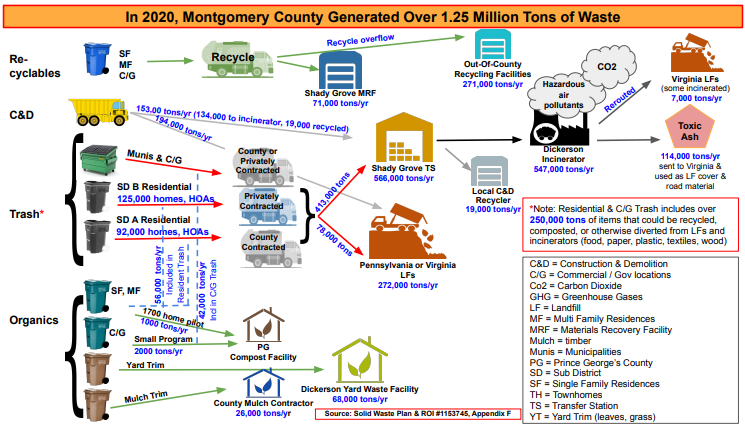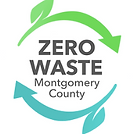
Why Should it Matter Where I Toss my Food Scraps
In 2020, the latest year for which there is data, Montgomery County residents, government and businesses threw away 196 million pounds (98,000 tons) of food. As the graphic above shows, only a small portion is getting composted by the county! Adding in non-recyclable paper, much of which consists of pizza boxes and food packaging, the total compostable material in our waste stream could be as high as 147,000 tons. Extrapolating from a Feeding America report, the food scraps wasted equates to tossing out 214 million meals and $670 million each year in our county alone. In addition to wasting money, food and other organic scraps (an additional 42 tons) made up 17% of all waste that was disposed of in incinerators or landfills. We can do better for ourselves, our county, and our world!
Why should I care?
Organic waste, including food, is a problem for all of us, not just for the agriculture or food industry. In fact, the United Nations estimates that the majority of food waste comes from households. Addressing our relationship with how we use and dispose of food can make a difference in multiple ways:
- Better food management can put money in your pocket. The Department of Agriculture calculates a savings of $370 per individual per year.
- Better food management is good for the food insecure, estimated to be 7% of our county’s population and 14% of our children. Unused food that is safe to eat can be diverted to people who need it. The Montgomery County Food Council and the Community Food Rescue are amazing organizations in our county that have more information as well as opportunities to volunteer.
- Better food management can save taxpayers money. More waste equates to more volume, which costs more taxpayers money in disposal fees.
- Better food management is good for the environment. Food waste generates greenhouse gas emissions in every step of the chain from food production itself, to its transportation, to processing, to distribution and back again as waste when it ends up at a landfill. At this point, the food releases methane, another potent greenhouse gas. In Montgomery County, most of the commercial waste (think restaurants, hospitals, and grocery stores) and much residential waste coming from municipalities is sent to landfills. The rest is sent to our incinerator, which is wasteful because it could have been diverted to create compost. This compost could be used to replenish soil.
